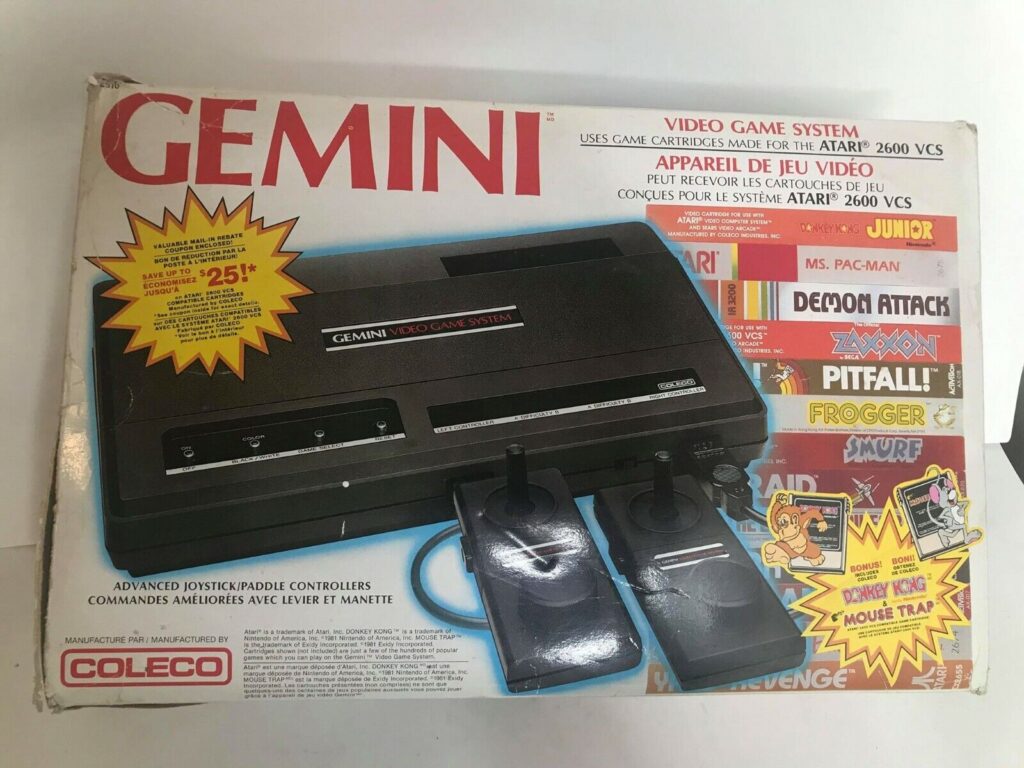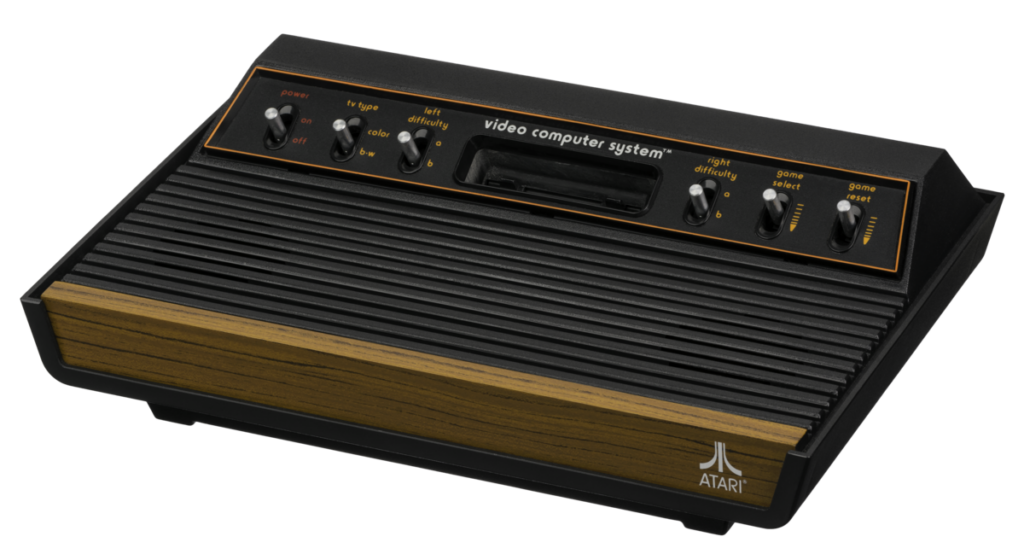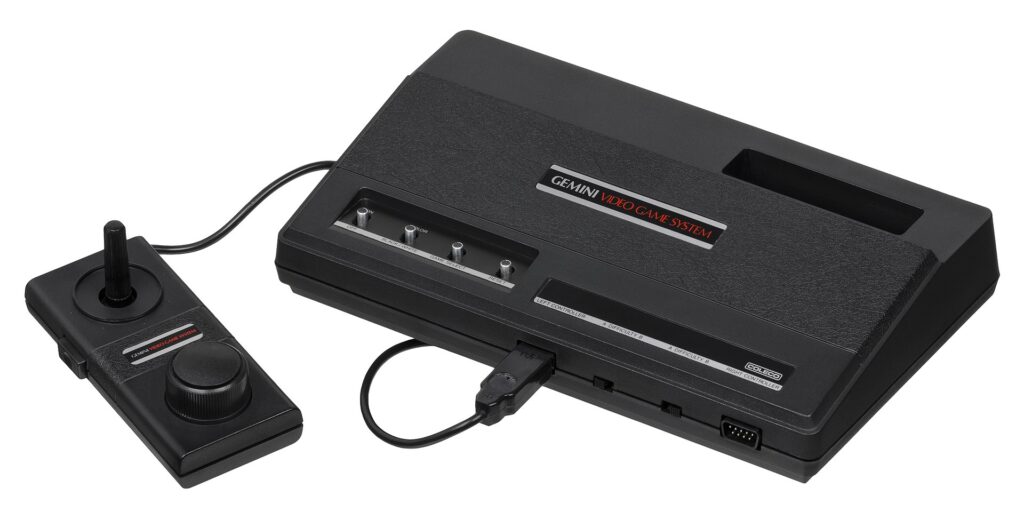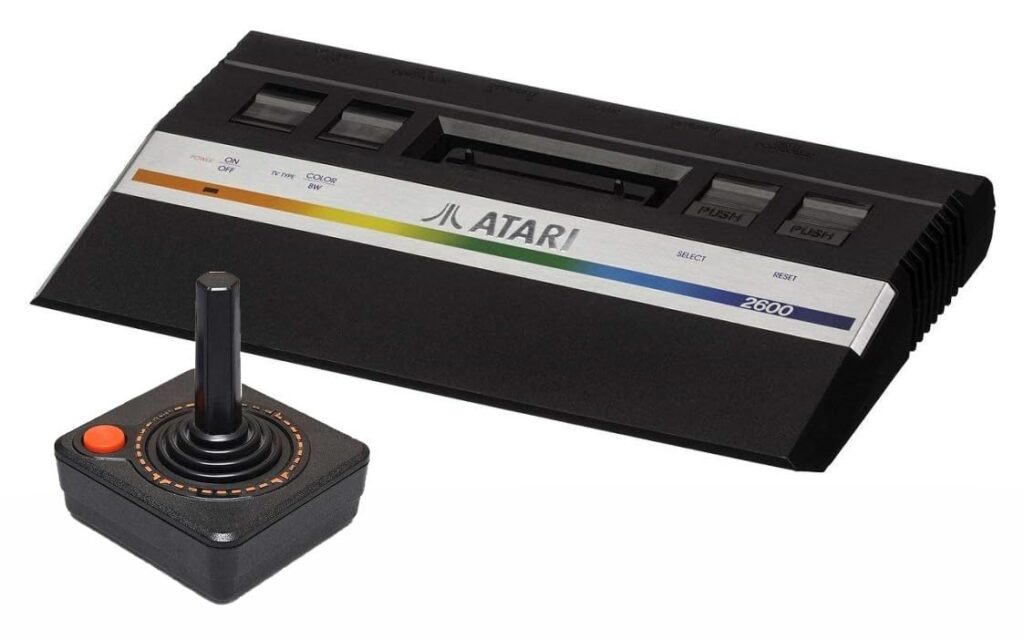Generally when I talk about Gemini on this blog I'm talking about the DIRECTV products that have come out in the last year or so. But, they're far from the only things called Gemini. Google's new AI is called Gemini, and so are a lot of other things. The word "Gemini" is Latin for "twins" and it's been used for a lot of products over the years. That doesn't explain why DIRECTV uses it for a single receiver but that's another whole story.
There's another Gemini, though, and it's over 40 years old.

This game console, which came out in 1983, probably doesn't seem familiar to you even if you were there back then. Yet, its story is not only interesting, it's also sort of still important today. Before I explain Gemini, I need to explain how we got here.
First of all, you probably remember this bad boy:

The Atari Video Computer System (it wasn't called the 2600 until later) was the go-to tech gift in the 1970s. Costing the equivalent of over $700 today, it gave people the ability to play multiple games on their TVs. It wasn't the first game console, and it wasn't even the best. But for a few years it was incredibly popular.
The makers of the Atari VCS, though, didn't think things all the way through when it comes to manufacturing. The computer industry at the time was fairly new, and most computer equipment before the 1970s was custom-built. It took a lot of expertise to make a computer in the days before computer chips were common.
When Atari made its VCS, they made it mostly from off-the-shelf parts. The few custom chips they did create were very simple and largely easy to understand. They were so easy, in fact, that an engineer could recreate them without having the original schematics. And, they did. Mattel created an adapter for its Intellivision console that played Atari games, and Coleco created one for their ColecoVision system.
At the time, we didn't really have a lot of laws around how tech was patented. After all, it was so hard to build a computer that you didn't need them. Atari sued Coleco, and this became part of the basis of what we know now as the laws around reverse engineering. (There's another interesting case involving Magnavox's console, but that's a story for another day.)
Atari said that their chips were proprietary. Coleco said they didn't disagree, but they were so easy to copy that people had a right to do it. In a way, it would be like if someone tried to copyright the words "it is what it is." They're words in common use and two different people could come up with the phrase without infringing on each other's copyright.
In the end, the two companies settled out of court, with Coleco retaining the right to clone Atari's chips but having to pay a royalty. And that's where Gemini came in.

Wikipedia
Coleco's own console, the ColecoVision, didn't sell very well, even with the addition of an Atari adapter. But, the company realized that they could sell the adapter as a standalone system with very little modification, and that they could do it at a lower price point than Atari. So they did, and they called it Gemini. (See, calling it Gemini because it's a twin of Atari makes sense.)
There were a lot of people who liked the Gemini's sleek lines and improved controllers, but it didn't matter. In 1983, a lot of people thought video games were "done." The market had been flooded with poor-quality games and Atari itself had stumbled with its next-generation 5200 console. This was two years before Nintendo hit our shores, and at that moment, people thought there would never be any interest in video games ever gain. Obviously, they were wrong.
Gemini sold somewhat better in Canada and other countries than it did in the US. In the US, Atari retooled its console to something more contemporary, calling it the 2600 Junior.

The Junior was cheaper to make and Atari pushed them out the door for practically nothing. Anyone who still wanted a console from that generation could afford one for about the price of a good dinner out for two people. But few did.
Obviously a few years later Nintendo and Sega reinvigorated home video games with better graphics and sound and lower price points. At about the same time, engineers at Hughes Aviation were tinkering around with the idea of using their satellite technology to create a pay-TV service without cables running to the house. That obviously became DIRECTV, and just a few short decades later, that company would have its own Gemini.
Personally there's a part of me that would love to buy a 1983 Gemini and mod it to fit a 2024 Gemini inside it. Why? Just to confuse people, and why not?
The post THROWBACK THURSDAY: Gemini… in 1983? appeared first on The Solid Signal Blog.
Continue reading...
There's another Gemini, though, and it's over 40 years old.

Say hello to Gemini. The 1983 Gemini, that is.
This game console, which came out in 1983, probably doesn't seem familiar to you even if you were there back then. Yet, its story is not only interesting, it's also sort of still important today. Before I explain Gemini, I need to explain how we got here.
First of all, you probably remember this bad boy:

The Atari Video Computer System (it wasn't called the 2600 until later) was the go-to tech gift in the 1970s. Costing the equivalent of over $700 today, it gave people the ability to play multiple games on their TVs. It wasn't the first game console, and it wasn't even the best. But for a few years it was incredibly popular.
The makers of the Atari VCS, though, didn't think things all the way through when it comes to manufacturing. The computer industry at the time was fairly new, and most computer equipment before the 1970s was custom-built. It took a lot of expertise to make a computer in the days before computer chips were common.
When Atari made its VCS, they made it mostly from off-the-shelf parts. The few custom chips they did create were very simple and largely easy to understand. They were so easy, in fact, that an engineer could recreate them without having the original schematics. And, they did. Mattel created an adapter for its Intellivision console that played Atari games, and Coleco created one for their ColecoVision system.
And then the lawyers got involved.
At the time, we didn't really have a lot of laws around how tech was patented. After all, it was so hard to build a computer that you didn't need them. Atari sued Coleco, and this became part of the basis of what we know now as the laws around reverse engineering. (There's another interesting case involving Magnavox's console, but that's a story for another day.)
Atari said that their chips were proprietary. Coleco said they didn't disagree, but they were so easy to copy that people had a right to do it. In a way, it would be like if someone tried to copyright the words "it is what it is." They're words in common use and two different people could come up with the phrase without infringing on each other's copyright.
In the end, the two companies settled out of court, with Coleco retaining the right to clone Atari's chips but having to pay a royalty. And that's where Gemini came in.
From adapter to standalone

Wikipedia
Coleco's own console, the ColecoVision, didn't sell very well, even with the addition of an Atari adapter. But, the company realized that they could sell the adapter as a standalone system with very little modification, and that they could do it at a lower price point than Atari. So they did, and they called it Gemini. (See, calling it Gemini because it's a twin of Atari makes sense.)
There were a lot of people who liked the Gemini's sleek lines and improved controllers, but it didn't matter. In 1983, a lot of people thought video games were "done." The market had been flooded with poor-quality games and Atari itself had stumbled with its next-generation 5200 console. This was two years before Nintendo hit our shores, and at that moment, people thought there would never be any interest in video games ever gain. Obviously, they were wrong.
Gemini sold somewhat better in Canada and other countries than it did in the US. In the US, Atari retooled its console to something more contemporary, calling it the 2600 Junior.

The Junior was cheaper to make and Atari pushed them out the door for practically nothing. Anyone who still wanted a console from that generation could afford one for about the price of a good dinner out for two people. But few did.
And in the meantime…
Obviously a few years later Nintendo and Sega reinvigorated home video games with better graphics and sound and lower price points. At about the same time, engineers at Hughes Aviation were tinkering around with the idea of using their satellite technology to create a pay-TV service without cables running to the house. That obviously became DIRECTV, and just a few short decades later, that company would have its own Gemini.
Personally there's a part of me that would love to buy a 1983 Gemini and mod it to fit a 2024 Gemini inside it. Why? Just to confuse people, and why not?
The post THROWBACK THURSDAY: Gemini… in 1983? appeared first on The Solid Signal Blog.
Continue reading...


